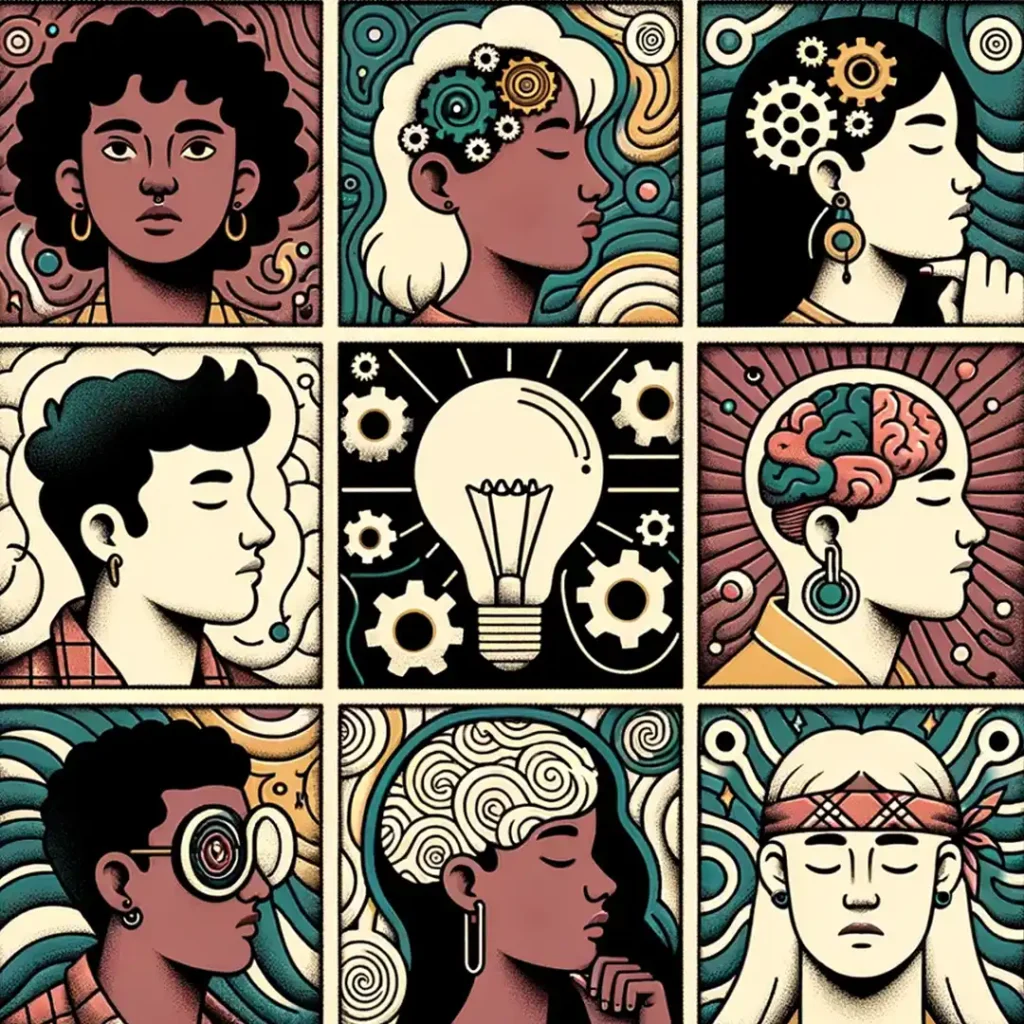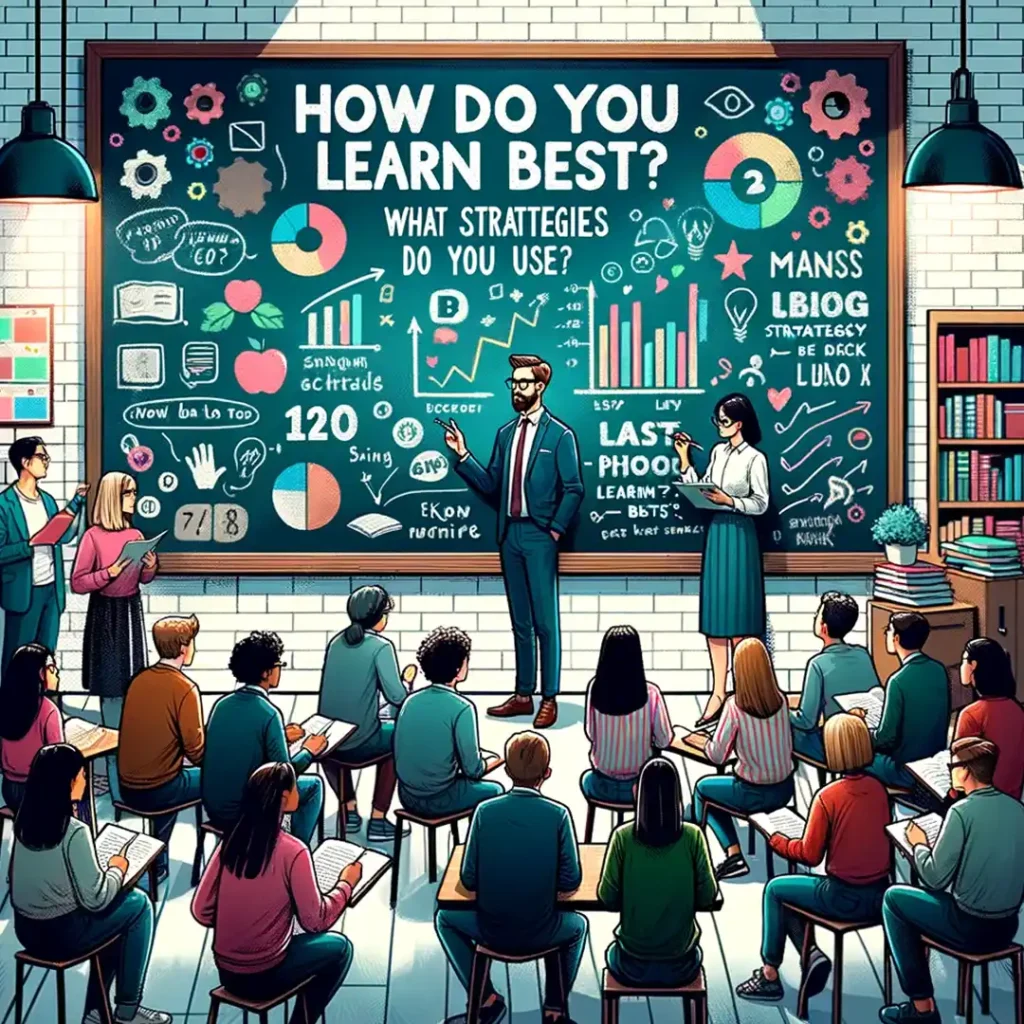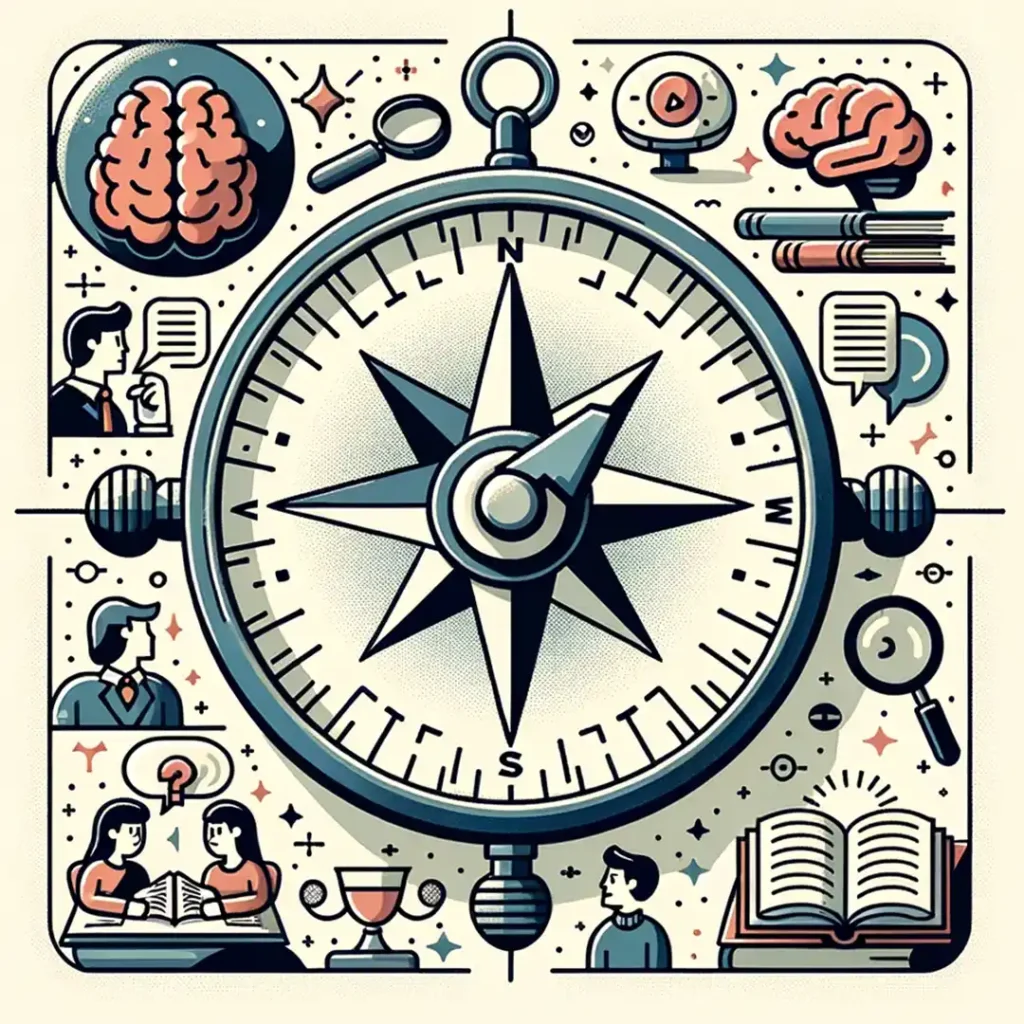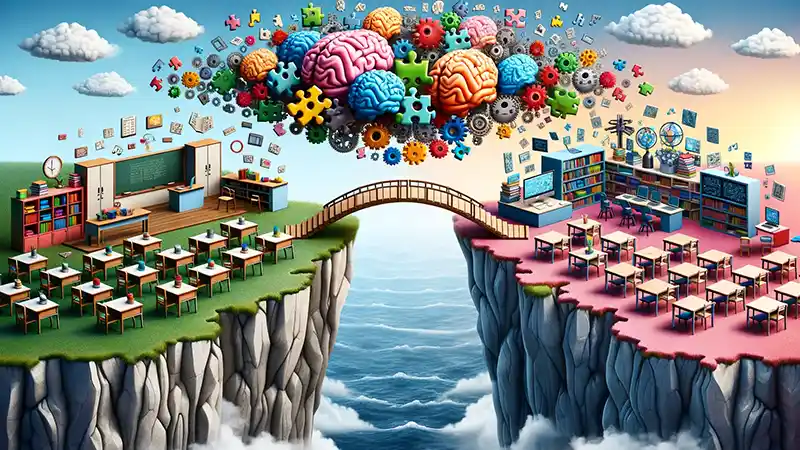As I stepped into the world of education, I was immediately faced with a profound realization: no two learners are the same. Each student enters the classroom with a unique background, a distinct set of experiences, and their own way of processing information. This recognition led me to the practice of differentiated instruction—a teaching philosophy that acknowledges and addresses the diverse needs of individual students. However, the real magic began when I integrated another powerful concept into my classroom: metacognition. Before diving deep into their intersection, let’s clarify what these terms truly signify.
Differentiated Classrooms: Tailoring Learning for Every Student
At its core, a differentiated classroom is one that tailors instruction and assessment to cater to individual learners. It’s about recognizing that not every student will understand a concept at the same pace or in the same manner. Some might grasp a mathematical formula through hands-on activities, while others may benefit from visual aids or group discussions. Differentiated instruction, thus, becomes a dance between the teacher’s observations and the ever-evolving needs of the students.
Metacognition: The Art of Thinking About Thinking
Metacognition, often termed as “thinking about thinking,” is the awareness and understanding of one’s cognitive processes. It’s about equipping students with the ability to assess their own learning styles, strengths, and areas of improvement. When a student realizes, “I comprehend this chapter better when I summarize it aloud,” that’s metacognition in action. It’s the bridge that empowers students to take charge of their own learning journey, fostering autonomy and resilience in academic pursuits.
The Intersection of Metacognition and Differentiated Instruction
A Glimpse into History
The roots of both differentiated instruction and metacognition can be traced back decades, though they rose to prominence in educational circles around the late 20th century. While differentiation found its advocates in educators who realized the inadequacies of a “one-size-fits-all” approach, metacognition became a buzzword when researchers started observing the significant advantages it offered in enhancing student performance.
The fusion of these concepts was perhaps inevitable. As teachers began to tailor their instruction to individual student needs, it became apparent that for true personalized learning to take place, students needed to be conscious of their own cognitive processes. Metacognition became the lens through which students could view, assess, and adapt their learning strategies in a differentiated setup.
Theoretical Foundations
The marriage of differentiated instruction and metacognition is grounded in constructivist theory, which posits that learners construct knowledge based on their experiences. Jean Piaget, a pioneer in cognitive development, emphasized the importance of self-regulated learning—a concept closely linked to metacognition. On the other hand, theorists like Howard Gardner, with his Multiple Intelligences framework, bolstered the argument for differentiation, suggesting that students have varied intelligences and thus require varied teaching approaches.
Incorporating metacognition into a differentiated classroom setting is a natural extension of these theories. It’s the idea that while educators tailor their teaching methods to suit different learners, students simultaneously become self-aware, evaluating and adapting their learning strategies based on their evolving needs.
In this confluence of metacognition and differentiated instruction, I’ve witnessed firsthand the transformation it brings to the classroom. As educators, we have an incredible opportunity, and perhaps even a responsibility, to blend these approaches for the betterment of our students, propelling them towards a brighter, more self-aware future.
Key Benefits of Integrating Metacognition

Incorporating metacognition into the framework of differentiated instruction isn’t just a passing educational trend; it’s a paradigm shift with tangible benefits that enrich the learning experience. As I ventured deeper into this integrative approach, I unearthed a myriad of transformative advantages that benefit both the student and educator.
Enhanced Self-Awareness and Self-Regulation
When students begin to understand their thought processes, they become more attuned to their learning needs. This heightened self-awareness facilitates better self-regulation. They learn to adjust their strategies, understand when they’re stuck, and seek help when needed.
Improved Critical Thinking Skills
Metacognition, by its nature, encourages students to question, analyze, and evaluate. This deep reflection and thought process organically enhance critical thinking capabilities.
Real-world application and results
Take, for instance, a debate club in a high school setting. When students are taught to introspectively analyze their argument strategies and reflect upon the effectiveness of their rhetoric, they don’t just become better debaters; they become sharper thinkers. I’ve witnessed students evolve from making surface-level arguments to crafting nuanced, well-researched points, all because they were trained to think about their thinking.
Empowerment and Autonomy in Learning
When students recognize and harness their metacognitive abilities, they feel more in control. This sense of empowerment translates into increased autonomy in their learning journey.
Why student agency matters
In the realm of education, there’s an undeniable shift towards nurturing self-directed learners—individuals who are proactive, curious, and in charge of their academic pursuits. When students are aware of how they learn best and are given the tools to navigate their learning, they become active participants rather than passive recipients. This sense of agency fosters responsibility, resilience, and a lifelong love for learning.
Bridging Individual Learning Differences
Metacognition, when paired with differentiated instruction, creates a potent combination to address the myriad learning differences in a classroom.
Strategies for diverse learners
One of the strategies I’ve employed is the use of ‘Learning Circles’. Here, students with varied learning preferences come together to discuss a topic. Each student shares their understanding and approach, allowing peers to glean different perspectives and strategies. This not only promotes collective learning but also enables students to discover alternate ways of processing information.
Boosted Engagement and Motivation
When students are actively involved in the learning process, their engagement levels soar. Reflecting on one’s learning can be incredibly motivating, as it often leads to personal revelations and successes.
The role of reflective practices
In my classroom, I’ve instituted bi-weekly reflection sessions. These aren’t merely retrospectives but are dynamic discussions where students share their highs, lows, and learnings. Witnessing a peer articulate a breakthrough moment can be a powerful motivator for others. Over time, these sessions have transformed my classroom into a space brimming with enthusiasm and a genuine zest for discovery.
Practical Strategies for Integration

Delving into the nexus of metacognition and differentiated instruction is indeed fascinating. However, the real challenge lies in transforming these theoretical concepts into actionable classroom strategies. Over the years, I’ve experimented with, observed, and refined several methods that seamlessly integrate metacognition into a differentiated learning environment. Let’s explore some of these game-changing strategies.
Metacognitive Prompts and Questions
One of the simplest ways to inculcate metacognitive practices is through the use of targeted questions that push students to think about their thought processes.
Examples for classroom use:
- How did you arrive at that answer?
- What strategies did you use to solve that problem, and why?
- Was there a point where you felt stuck? How did you navigate it?
- Which part of today’s lesson resonated most with you, and why?
Using these prompts periodically can help students become more self-aware and fine-tune their learning approaches based on self-reflection.
Think-Alouds and Modeling
By articulating their thought processes aloud, educators can model metacognitive strategies for their students, showcasing the intricate dance of cognition and reflection.
Demonstrations and exercises:
For instance, while solving a math problem on the board, an educator might verbalize, “I’m choosing to use this formula because…”, or during a reading comprehension exercise, one might remark, “This paragraph makes me think of…”. Over time, students can also engage in their own think-alouds, helping peers understand varied cognitive strategies.
Reflective Journals and Portfolios
Documenting learning journeys provides students with a tangible record of their cognitive processes, challenges, and breakthroughs.
Templates and best practices:
A simple reflective journal template might include sections like:
Today’s Learning Objective:
- Strategies I Used:
- Challenges Faced:
- Insights and Realizations:
Similarly, portfolios can be used for longer durations, allowing students to collate their work, reflect upon their progress over a semester, and set goals for the future.
Peer Discussions and Collaborative Learning
Harnessing the collective wisdom of the classroom can be powerful. By engaging in structured discussions, students can share, learn, and reflect upon diverse metacognitive strategies.
The power of collective reflection:
Consider introducing ‘Metacognitive Sharing Circles’ where students discuss a recent lesson, the strategies they employed, challenges they faced, and insights they gathered. Not only does this create a platform for collective reflection, but it also promotes empathy as students gain insights into the diverse cognitive landscapes of their peers.
Implementing these strategies requires patience, experimentation, and an unwavering commitment to fostering a metacognitively rich environment. However, the rewards—students equipped with self-awareness, resilience, and a deep love for learning—are undeniably worth the effort. As educators, our task is to guide our learners through this intricate maze of cognition, ensuring they emerge empowered, enlightened, and ever-curious.
Challenges and Solutions

As with any transformative educational approach, integrating metacognition into a differentiated classroom doesn’t come without its fair share of challenges. However, understanding these hurdles and being equipped with proactive solutions can make the journey smoother and more impactful.
Potential Hurdles of Introducing Metacognition
Misunderstanding of Metacognition: At times, there’s a misconception that metacognition simply means ‘thinking hard.’ This can lead to superficial application rather than a deep, introspective analysis of one’s cognitive processes.
Resistance to Change: Some students, and even educators, might be set in their ways and resistant to adopting new strategies, especially if they feel their existing methods are ‘working fine.’
Time Constraints: The process of reflecting, discussing, and analyzing thought processes can be time-consuming, and educators might feel pressured to ‘cover the curriculum’ instead of delving deep into metacognitive practices.
Overwhelming for Some Students: Students with specific learning challenges or those who struggle with introspection might find the metacognitive approach overwhelming initially.
Solutions and Proactive Measures
Clear and Continuous Education: Begin with a comprehensive introduction to metacognition. Utilize visuals, examples, and hands-on activities to demonstrate the power and process of ‘thinking about thinking.’ Continuous reinforcement through examples will help cement the concept.
Gradual Integration: Instead of a complete overhaul, introduce metacognitive strategies gradually. Starting with simple reflective prompts or think-aloud sessions can make the transition smoother and less intimidating.
Strategic Time Management: While it’s true that metacognitive practices can be time-intensive, the long-term benefits in terms of improved student understanding and autonomy make it a worthwhile investment. Educators can weave in metacognition into existing lessons, making it a natural part of the learning process rather than an ‘additional task.’
Personalized Support: Recognize that every student’s metacognitive journey will be unique. Some might take to it naturally, while others might need additional support. Tailored interventions, like one-on-one sessions or specialized reflective prompts, can help students who find the process challenging.
Encourage a Growth Mindset: Foster an environment where mistakes are seen as learning opportunities. By cultivating a growth mindset, both educators and students will be more open to experimenting with metacognitive strategies, understanding that it’s a journey with its ups and downs.
Collaborative Learning: Encourage students to work together, share their metacognitive strategies, and learn from one another. This shared experience can lessen the intimidation factor and create a supportive learning community.
Conclusion
The Future of Education with Metacognition and Differentiation
The landscape of education is ever-evolving. However, amid the myriad of pedagogical trends and shifting paradigms, the essence of fostering deep, meaningful learning remains constant. In this light, the synthesis of metacognition and differentiated instruction emerges not merely as a fleeting educational trend but as a resilient and promising horizon for the future.
Imagine classrooms where students don’t just absorb information but actively engage with it, understanding their strengths, addressing their weaknesses, and continually adapting their learning strategies. Picture educators who don’t just teach but inspire, empower, and guide their students on individualized journeys of discovery. This is the potential of integrating metacognition into differentiated instruction—a paradigm where learning becomes a deeply personal, introspective, and transformative experience.
Call to Action: Encouraging Educators to Take the Leap
To my fellow educators, I understand the reservations you might have—time constraints, initial resistance, or the sheer magnitude of incorporating a new methodology. But I urge you to see beyond these immediate challenges. Embrace metacognition not as an additional layer to your teaching but as a tool to enrich, empower, and enlighten.
Remember, the greatest revolutions in education have come from those willing to venture into the uncharted, to question the status quo, and to reimagine the possible. So, take the leap. Dive into the world of metacognition and differentiated instruction. Your students, with their heightened self-awareness, resilience, and love for learning, will be the living testament to your courage and commitment.
Further Reading
Visible Learning and the Science of How We Learn by John Hattie and Gregory Yates – A research-backed look into effective learning strategies, including the role of metacognition.


